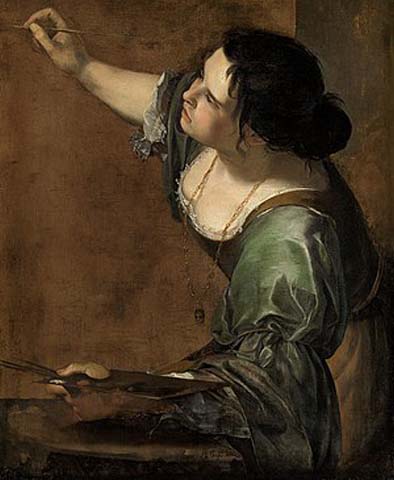
Fin dal primo giorno dopo essere presentata ad Artemisia in un’aula buia al università, sono stata affascinata e incuriosita dalla storia dell’artista del XVIº secolo.
From the first day I was introduced to Artemisia in a darkened lecture hall in college, I have been fascinated and intrigued by the seventeenth-century artist’s story.
Artemisia fu un’artista del sedicesimo
secolo contrapposta a una società
dominata dagli uomini.
Artemisia was a sixteenth-century artist
pitted against a male-dominated society.
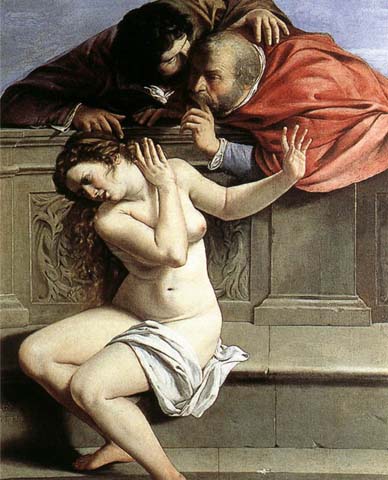
Durante la sua vita Artemisia ha sofferto molti momenti dolorosi e difficili. Da ragazza, vivendo in una società dominate dagli uomini, a causa del suo genere, ha vissuto una vita molto limitata. Orazio Gentileschi ha cercato di proteggere sua figlia dalla irrispettosa società romana senza legge, dove ladri e uomini brutali vagavano per le strade, facendola prigioniera virtuale all’interno della sua casa. Ma alla fine, ha fallito. Artemisia ha subito molestie sessuali e stupri per mano del suo istruttore di pittura Agostino Tassi nella privacy della sua camera da letto.
During her lifetime Artemisia suffered through many dark days. As a young girl, living in a male-dominated society, because of her gender, she lived a very restricted life. Orazio Gentileschi sought to protect his daughter from the rough and lawless Roman society, where thieves and brutal men roamed the streets, keeping her a virtual prisoner within her own house. But in the end, he failed. Artemisia endured sexual harassment and rape at the hands of her painting instructor Agostino Tassi in the privacy of her bedchamber.
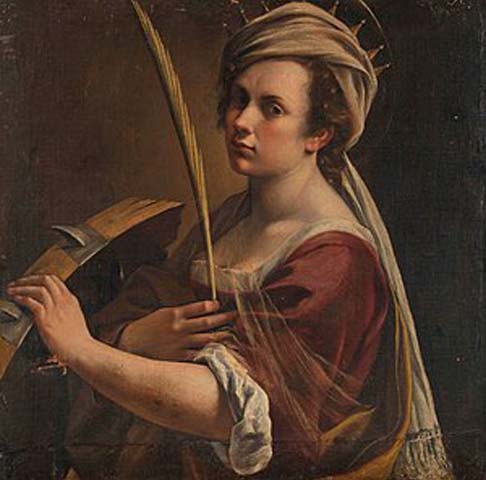
Tassi, un’amico della famiglia, è stato assunto dal padre di Artemisia per insegnarle tecniche pittoriche e il disegno prospettico. Un uomo lascivo con desideri depravati la sedusse e la costrinse a fare sesso con lui nonostante la sua repulsione e le sue lotte per respingerlo. Artemisia lo minacciò con un coltello per impedirgli di farle del male, lanciandogli persino il pugnale per tenerlo a bada. Ma, comunque, la sopraffece e la prese. Dopo la violentazione, promise di sposarla — una bugia che le ha detto per mantenere intatto l’onore di Artemisia, placarla e avere libero accesso al suo letto.
Tassi, a friend of the family, was hired by Artemisia’s father to teach her painting techniques and perspective drawing. A lewd man with depraved desires seduced her forced her to have sex with him despite her revulsion and attempts to fight him off. She threatened him with a knife to prevent him from harming her, even threw the dagger at him to keep him at bay. But, still, he overpowered her and took her. After the act, he promised to marry her — a lie he told her to keep her honor intact and to have free access to her bed.
In un’epoca in cui le donne non portavano
i loro stupratori in tribunale, Artemisia fu costretta da suo padre a farlo.
In a time when women didn’t take their rapists to court — Artemisia was forced by her father to do so.
Ma, alla fine, Agostino Tassi fu scoperto dal padre di Artemisia e alla fine rinunciò alla sua proposta di matrimonio. Certo, non poteva sposare Artemisia perché era già sposato, con i figli di sua moglie e con sua cognanta, il che lo rendeva un bigamista. Artemisia ha scoperto questi dettagli solo dopo che lei e suo padre hanno portato l’uomo in tribunale in un processo molto pubblico. Durante il processo di un anno, Artemisia ha subito grandi indignazioni ed è stata sottoposta a controllo fisico della sua vagina di frone a un Giudice. Anche lei fu torturata, con la Sibil che avevea le mani legate con una corda e strettamente legata, per scoprire se era lei a dire la verità. Nel frattempo, il suo stupratore sembrava compiaciuto e non si sottomise mai allo stesso tipo di tortura.
But, eventually, Agostino Tassi was found out by Artemisia’s father, and he finally reneged on his proposal of marriage. Of course, he couldn’t marry Artemisia as he was already married, with children by his wife, as well as with his sister-in-law — making him a bigamist. Artemisia only found these details out after she and her father took the man to court in a very public trial. During the year-long process, Artemisia endured great indignities and was subjected to physical inspection of her vagina in front of a judge. She was tortured as well, with the Sibil having her hands bound with a rope and wound tighter and tighter to find out if she was the one telling the truth. Meanwhile, her rapist looked on complacently and never submitted to the same kind of torture.
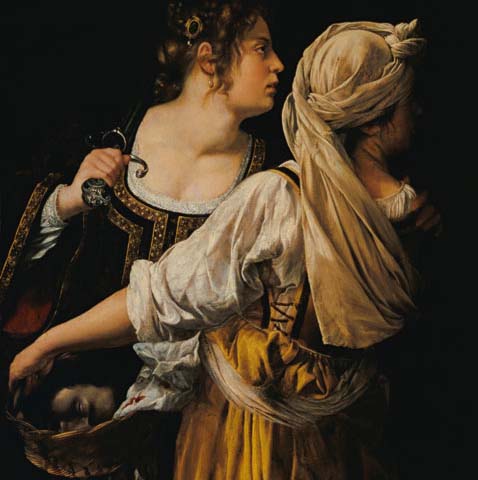
Artemisia vinse il suo caso contro Tassi
ma ha ancora lasciato il tribunale in
disgrazia — la sua vita in rovina.
Artemisia won her case against Tassi but still left the courtroom in disgrace – her life in shambles.
Artemisia vinse il suo caso giudiziario, ma ha lasciato il tribunale in disgrazia e ha quasi perso la sua promettente carriera pittorica. Nel tentative di salvare la sua reputazione, suo padre decise di mandarla in un convent, pensando che nessun uomo l’avrebbe mai toccata dopo la disgrazia e il suo rapport con Tassi. Alla fine, la barattò con un donnaiolo fiorentino, e Artemisia fu costretta a lasciare la sua città di Roma, per ricominciare da capo in una nuova città. Lì viveva con un uomo che non amava né rispettava e che le rubava I soldi. Durante I suoi anni a Firenze, ha anche subito diversi aborti spontanei.
Artemisia won her court case but left the courtroom in disgrace and almost lost her promising painting career. In an attempt to save her reputation, her father decided to send her to a convent, thinking no man would ever touch her since she was soiled goods. In the end, he bartered her off to a philandering Florentine man, and Artemisia was forced to leave her hometown and begin life all over again in a new city. There she lived with a man she didn’t love or respect, and who stole her money. During her years in Florence, she also suffered several miscarriages.
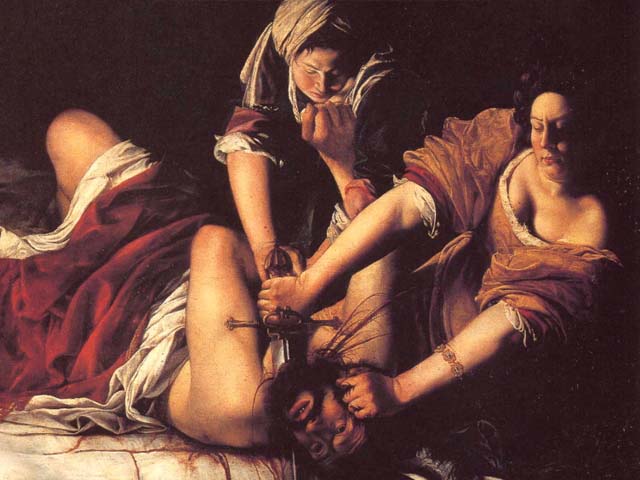
Ma Artemisia ha perseverato, usando la
sua arte come terapia per sollevarsi dale
ceneri e diventare un artista di fama mondiale.
But, Artemisia persevered, using her art as therapy to
rise from the ashes and become a world-renowned artist.
Eppure, nessuno di questi eventi devastanti della prima infanzia ha impedito ad Artemisia di diventare una donna forte e indipendente, un’artista di successo. A Firenze, divenne grande amica di Galileo e Cosimo II de’ Medici era il suo patrono. Fu Cosimo a difendere Artemisia riconoscendo il suo talento, invitandola a essere la prima donna ammessa nell’esclusiva Academia dell’Arte di Firenze. Ai suoi tempi, divenne un’artista di fama mondiale, dipingendo per re e duchi in tutta Ueropa e persino Inghilterra. Ha superato I suoi pari maschi perché ha sviluppato il suo proprio stile unico e non ha imitato nessun altro.
And yet, none of these early-life, devasting events prevented Artemisia from maturing into a strong, independent woman, a successful artist. In Florence, she became great friends with Galileo and Cosimo II de Medici was her patron. It was Cosimo who championed Artemisia recognizing her talent, inviting her to be the first female admitted into Florence’s exclusive Art Academy. In her own time, she became a world-renowned artist, painting for Kings and Dukes all over Europe and even in England. She surpassed her male peers because she developed her own unique style and did not imitate the work of other men.
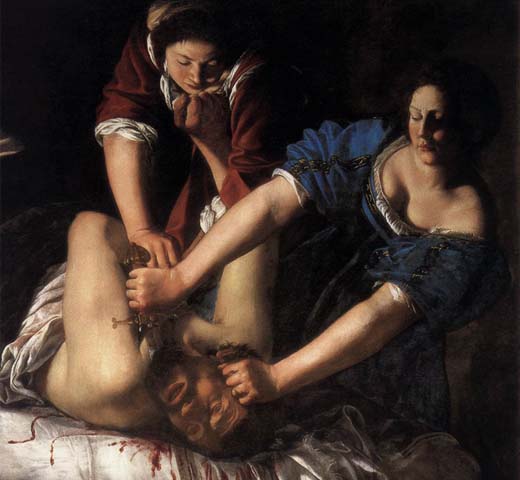
Artemisia è stata la prima ad avviare
il movimento ME TOO?
Was Artemisia the first to start the ME TOO movement?
Può essere discusso; Artemisia è stata una delle prime a sostenere il movimetno della donna, rimodellando i temi biblici tradizionali, riproponendoli in modo che nelle sue tele le donne diventino il centro dell’attenzione dell’osservatore. Le donne sono raffigurate come forti protagonist nel opera di Artemisia, ridefinendo vecchie storie a favore delle donne che trionfano contro tutte le probabilità.
It can be argued; Artemisia was one of the first to champion the woman’s movement, refashioning traditional biblical themes, repurposing them so that in her canvases, women become the center of the viewer’s focus. Women are depicted as strong protagonists in her work, redefining old stories in favor of women who triumph against all the odds.
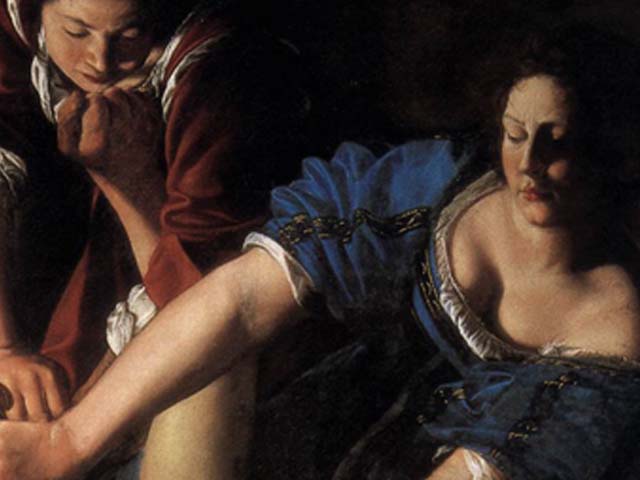
Artemisia fu la prima a usare la pittura come terapia artistica per curare le sue ferite?
Was Artemisia the first to use painting as art
therapy to heal her wounds?
Tutto ciò che Artemisia avrebbe mai volute fare era dipingere. Ne era ossessionata. Sembra che abbia trovato un modo per superare il dolore attraverso il suo opera d’arte, permettendole di trovare conforto — forse anche una vendetta. Infatti, uno dei temi ricorrenti nell’opera di Gentileschi è quello di Giuditta e Oloferne. In una serie di dipinti che raffigurano la decapitazione del generale siriano da parte dell’eroina ebrea, Artemisia dipinge la propria imagine e — il volto del suo stupratore Agostino Tassi diventa quello del generale.
All Artemisia ever wanted to do was paint. She was obsessed with it. It seems that she found a means of working through her pain through her work, allowing her to find solace – and perhaps revenge. For indeed, one of the reoccurring themes in Gentileschi’s work is that of Judith and Holofernes. In a series of paintings depicting the beheading of the Syrian General by the Jewish heroine, Artemisia paints her own image, and the visage of her rapist Agostino Tassi’s becomes the face of the general.

Artemisia, come la dea Artemide per la quale è stata nominate, dimostra che quando le donne si uniscono e prendono il controllo delle loro vite e dei loro destini, diventano gli eroi della loro stessa storie e sono inarrestabili.
Artemisia, like the goddess Artemis for whom she was named, demonstrates that when women unite and take control of their lives and their destinies, they become the heroes of their own story, and they are unstoppable.
Per saperne di più su Artemisia e la sua
storia, prendi una copia del mio romanzo
su di lei, intitolato “Eternally Artemisia.”
To learn more about Artemisia and her
life story, pick up a copy of my novel
about her, entitled “Eternally Artemisia.”
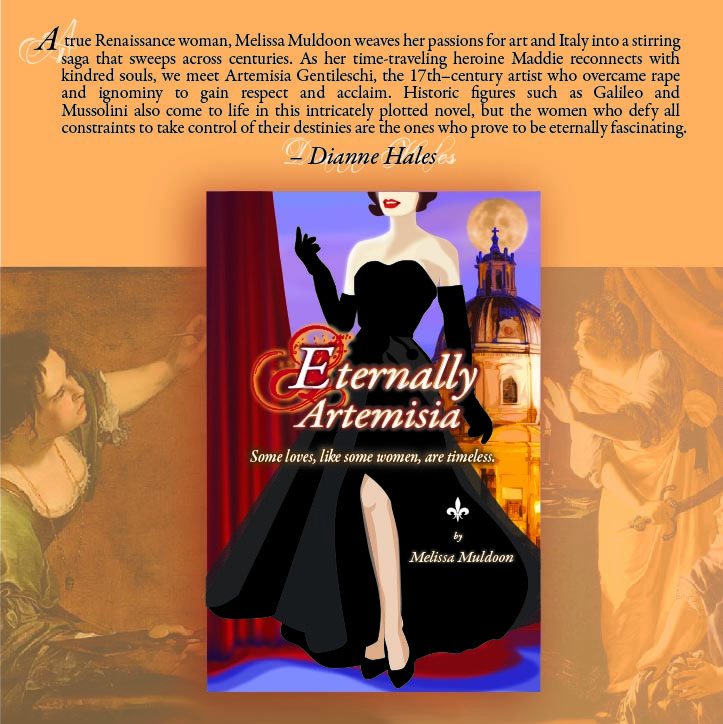
Book Synopsis:
They say some loves travel through time and are fated to meet over and over again. For Maddie, an art therapist, who wrestles with the “peculiar feeling” she has lived previous lives and is being called to Italy by voices that have left imprints on her soul, this idea is intriguing. Despite her best efforts, however, proof of this has always eluded her. That is, until one illuminating summer in Italy when Maddie’s previous existences start to bleed through into her current reality. When she is introduced to the Crociani family—a noble clan with ties to the seventeenth-century Medici court that boasts of ancestors with colorful pasts—she finally meets the loves of her life. One is a romantic love, and another is a special kind of passion that only women share, strong amongst those who have suffered greatly yet have triumphed despite it. As Maddie’s relationship develops with Artemisia Gentileschi—an artist who in a time when it was unheard of to denounce a man for the crime of rape, did just that—Maddie discovers a kindred spirit and a role model, and just what women are capable of when united together. In a journey that arcs back to biblical days and moves forward in time, Maddie encounters artists, dukes, designers, and movie stars as well as baser and ignoble men. With Artemisia never far from her side, she proves that when we dare to take control of our lives and find the “thing” we are most passionate about, we are limitless and can touch the stars.
Available on Amazon in Print: $16.99 and Kindle: $8.99
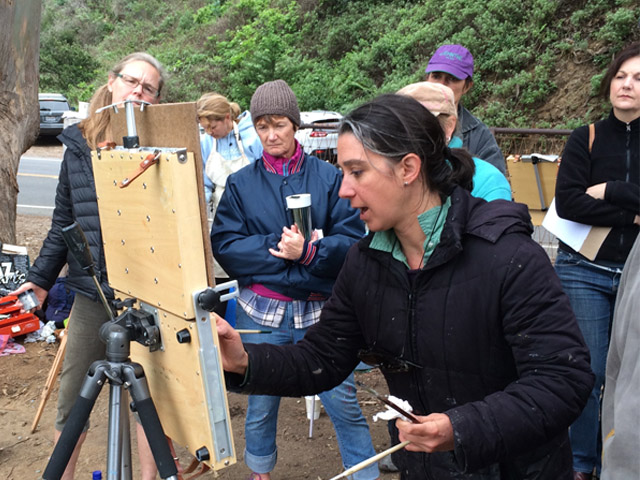


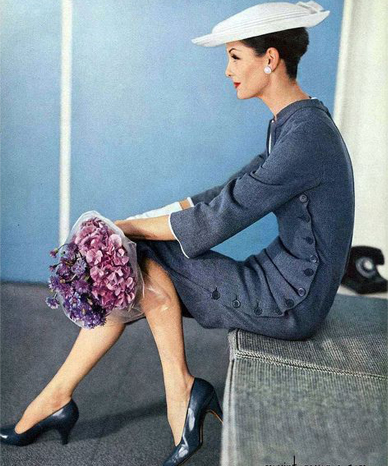








Hello Melissa, I love your posts! They are so interesting. I always learn something new and also get to practice my Italian.
Regards,
Karen Alonso
Ciao Karen! Che piacere sentirti! Sono contenta che ti piaccia il blog e gli articoli! Stammi bene! Un abbraccio! Melissa